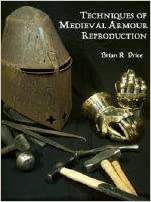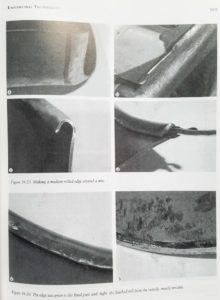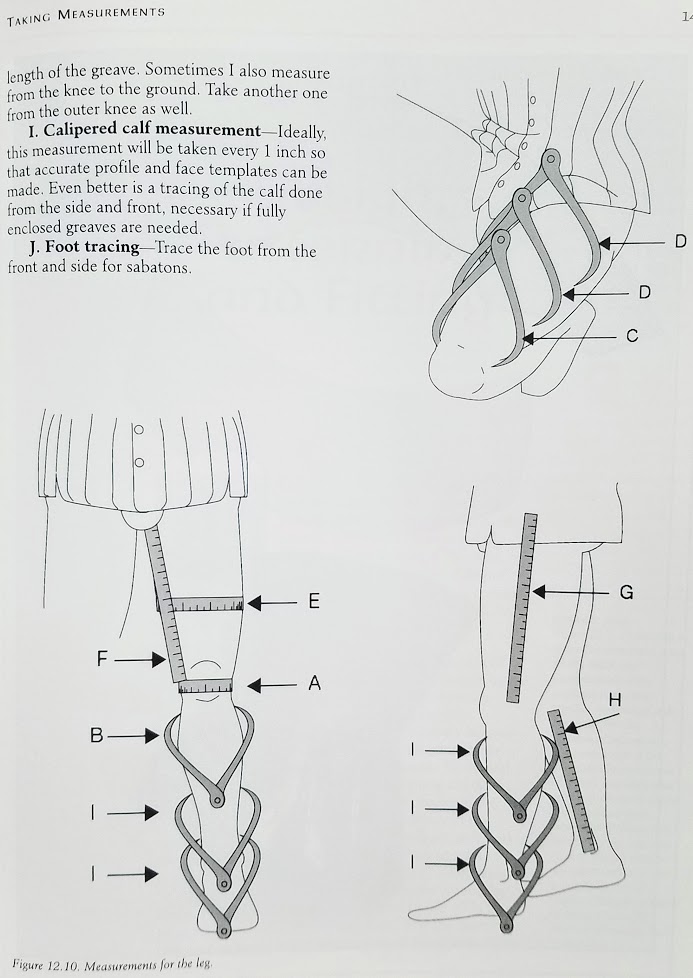By: Brian R. Price – Published 2000

Price : $ – Amazon
Philip’s Ranking: 5
Beginner Blacksmith: 2
Advanced Blacksmith: 2
Inspiration: 5
Historical: 5
Video Review: N/A
Brian R. Price has produced a 485 page masterpiece with Techniques of Medieval Armour Reproduction: The 14th Century. If you’ve ever wanted to make plate armor, mail, or cuirboille armor this is an essential text.

By the early 1400s the full suite of plate armor had been developed and entered the battlefield. Very few things evoke the essence of what a blacksmith is in the mind of the general public as much as a blacksmith hammering out arms and armor. It is somewhat ironic that this type of work was never really part of the typical blacksmiths skill set. Certainly by the time full plate armor was being produced specialized armor smiths would have been doing most of the creation of something as complex as a full harness of armor.
To recreate armor in the traditional ways a general blacksmith or bladesmith will need a new set of skills and tools that are specific to armor smithing. Luckily this book takes you step by step through everything you need to know. Brian introduces the required tools in section 2 including a wide variety of hammers, stakes, doming tools, and cutting implements.
In Section 3 the reader is walked through how to take measurements, pattern, cut, weld, hammer, shape, rivet, grind, and decorate the armor. The skills are covered in depth with enough information to take someone who’s got basic blacksmithing skills to competency in crafting armor. One thing this book does make clear is that to be a master armorer there is a tremendous amount of skill that can only be developed through practice.
If you want to make armor this book is a must have purchase. It unfortunately seems to be out of current production although used copies are available they are pricey you won’t find a better manual on the process.
Chapters:
- Section 1: The Armourers
- Chapter 1: A Brief History of the Armourer and His Art

- Chapter 2: Armour Reproductions: Armouring for Collectors and Museums
- Chapter 3: Armouring for Reenactors: Tournament Societies and Medieval Feats of Arms
- Chapter 1: A Brief History of the Armourer and His Art
- Section 2: Tools and Supplies
- Chapter 5: The Armourer’s Workshop
- Chapter 6: Tools
- Chapter 7: Supplies for the Armoury
- Chapter 8: Concerning the Selection of Metal: Iron, Steel, and “Latten”
- Section 3: Techniques
- Chapter 9: Steps Required for All Pieces
- Chapter 10: Training the Hammer and the Eye
- Chapter 11: Conducting Research
- Chapter 12: Taking Measurements
- Chapter 13: Design, Patterning, and Fitting
- Chapter 14: Cutting and Deburring
- Chapter 15: Basic Hammerwork
- Chapter 16: Enhancing Techniques
- Chapter 17: Riveting and Welding
- Chapter 18: Raising: The Cornerstone Technique
- Chapter 19: Annealing, Heat-Treating, and Tempering
- Chapter 20: Engineering the Joint
- Chapter 21: Latches, Catches, Hinges, and Buckles
- Chapter 22: Grinding and Polishing
- Chapter 23: Decorative Enhancements
- Chapter 24: Strapping and Leatherwork
- Chapter 25: Padding and Arming Points
- Chapter 26: Weaving Mail
- Chapter 27: Working in Cuirboille
- Chapter 29: Caring for Finished Armour
- Section 4: Projects
- Chapter 29: Armour in the 14th Century
- Chapter 30: Defending the Head
- Chapter 31: Defending the BOdy
- Chapter 32: Defending the Arm
- Chapter 33: Defending the Hand
- Chapter 34: Defending the Leg
- Appendices
- Appendix A: The Company of Saint George
- Appendix B: Glossary of Technical and Medieval Terms
- Appendix C: Sources
- Appendix D: Select Bibliography